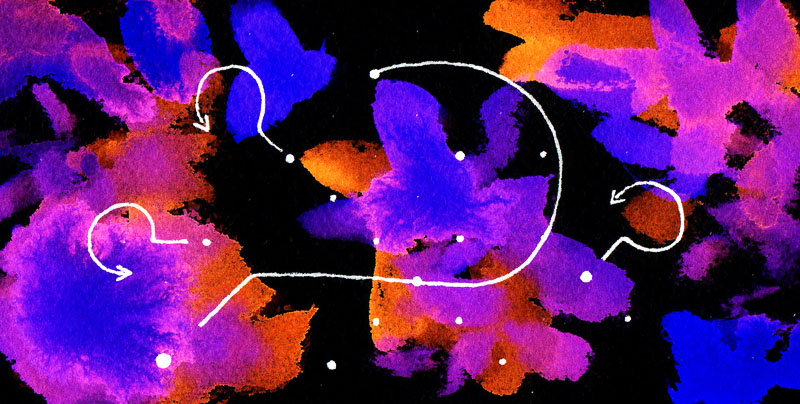Limitations of Rhythmic Catches and IMBO

Table of Contents
Introduction⌗
There is a lot that Rhythmic Catches (RC) and IMBO can do. But what are their known limitations?
Intended limitations⌗
For starters, there are a lot of things that Rhythmic Catches and IMBO never intended to be able to do. These include everything outside their goals, such as providing information about the prop orientations or juggler poses.
An important question that I asked myself multiple times is: “what is a trick?" I have yet to find a satisfying answer to this. However, it is clear that some kind of nuances are irrelevant for most tricks. For example, how wide should a cascade pattern be, should it be shoulder width, narrower, or wider? Most jugglers agree that no matter how wide or narrow you juggle, a cascade pattern will be a cascade pattern. RC and IMBO intend to describe tricks, not execution styles of such tricks. This means that many potential qualities of juggling moves have been purposefully ignored. However, can one tell in advance which features are not relevant for tricks? There certainly are juggling moves in which for example the width of a pattern becomes the defining feature. In fact, a ‘wide’ cascade is sometimes definitely seen as a different from a ‘normal’ cascade.
I suppose that RC & IMBO conform to my own ideas of what a trick or pattern generally is.
Rhythmic Catches⌗
There certainly are also unintended limitations. Here I sum up a few things that I wish that Rhythmic Catches could do, but which it can’t describe very well right now.
Rhythmic Catches is not ideal for polyrhythmically patterns. They can be written down, but the reader may never know that they are looking at a polyrhythmic pattern without extra instructions. In fact, any kind of rhythm can not be deduced from the notation. This is a shame, especially for a system that calls itself “rhythmic”.
RC attempts to describe inside and outside, but only in relation to the incoming ball. It was pointed out to me by Denis Paumier that juggling balls can be inside or outside of earlier thrown balls from the same hand too. For example in the shower pattern one can throw a high ball on the inside of the previous high ball. We see something similar in this 522 through, where a the ball thrown from the top goes around the crossing ball. There is currently no way to describe these kinds of patterns using RC or IMBO.
I’m sad that Rhythmic Catches can currently not deal well with claw catches and throws. Since the hand contact point is the same as in normal throws, and because the hand can be rotated with a ball in the hand without the need for a toss, it seems unsuitable to give these positions special names in the RC manipulation site system. Perhaps a special sign is needed for them? So far this has not been added as to not overflow the system with special characters for each exception we may come across.
IMBO⌗
The height of catching and throwing is not easy to describe. Sometimes, such as in this 7423 slam it can be useful to notate a hand that is raised, even if it is not in overhand position. An extra hand position could be useful, although one could then ask themselves if there are not more of these. How about also an arm extended to the side position? I’m unsure how many exceptions to ‘normal’ tossing are needed, but I’m sure they can’t be described with RC or IMBO. A system that could have described some extra hand positions would also be able to better describe the carry paths in tricks such as the factory. Perhaps there is a way in the future that these positions can be treated as modifiers of the ground state, just like we have modifiers within holes like Mp or Mo?
An important aspect for tricks under the legs can be which leg is raised up. We call a throw under the legs an “under the legs” if the leg which we throw under is raised, but we call it an “albert” or “trebla” when both legs are planted on the floor. And there is the possibility of raising the opposite leg as well. Possibly a perfect body throw notation system should be able to describe these different moves, but since IMBO regards them as parts of ‘poses’ rather than ‘throws’, they are ignored.
Not always may it be clear which holes are passed, but this is particularly true for the H holes, as it’s easy to throw right over the center of the head and then not know on which side of the head to notate. For example this move is used in ass catches.
Closing thoughts⌗
A final aspect that is easy for me to overlook, is that these systems are created based upon what I think is juggling, and based upon the juggling that I’m familiar with. Had claw catches been a very important aspect of my own juggling, I might have aimed to include them from the very start. Also, there may be interesting features of toss juggling that I’m not even aware of, which I have not even considered to include in my systems.
Ultimately, these systems are affected by my biases. I hope other jugglers will improve upon these systems, and that this will allow them over time to become less centered around my own definitions of juggling and more useful to the juggling community at large.